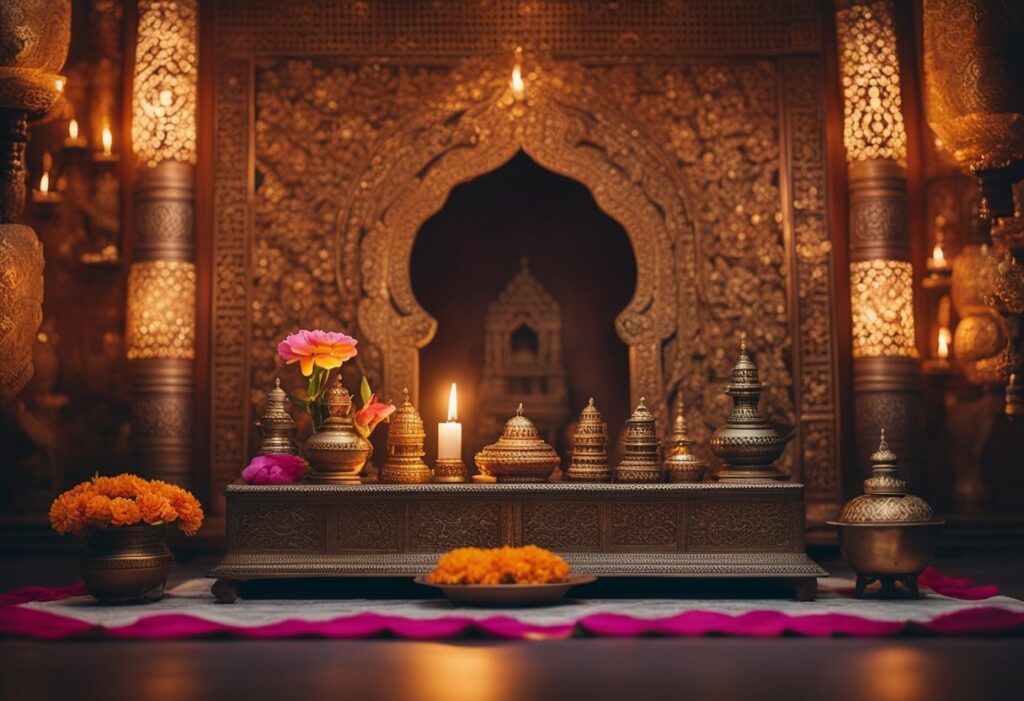Pooja Room Interior Design: Transform Your Sacred Space with These Exciting Ideas
Are you looking to create a pooja room in your home but don’t know where to start? Designing a pooja room can seem like a daunting task, but it doesn’t have to be. A pooja room is a sacred space in your home, where you can connect with your spirituality and find peace and positivity. It’s essential to create a space that reflects your beliefs and values and brings a sense of calm and tranquillity to your home.
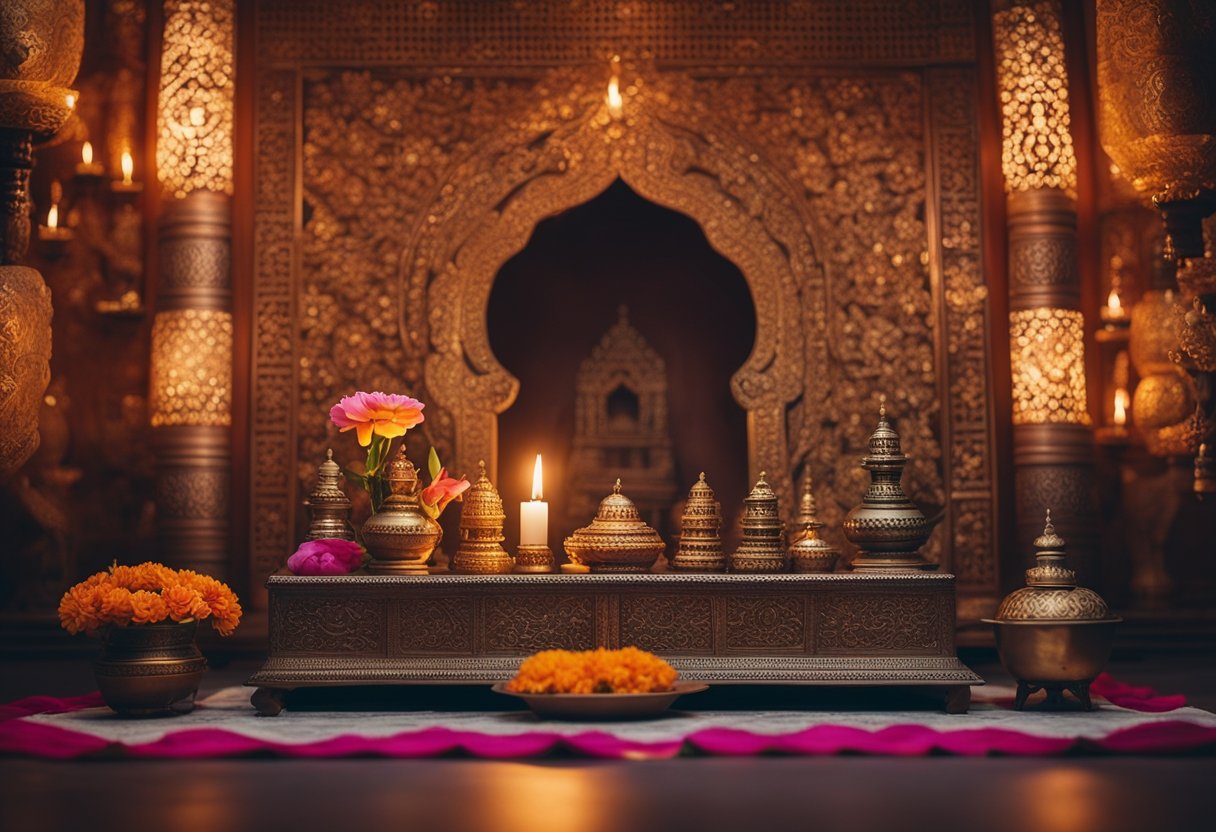
Integrating a pooja space in modern homes is becoming increasingly popular, and it’s easy to see why. With the stresses of everyday life, having a sacred space to retreat to can be a game-changer. Whether you’re looking to create a traditional pooja room or a more contemporary space, there are many ways to design a pooja room that aligns with your aesthetics and beliefs. In this article, we’ll explore some of the best pooja room interior design ideas and tips to help you create a space that radiates positive energy and tranquillity.
Key Takeaways
- A pooja room is a sacred space in your home where you can connect with your spirituality and find peace and positivity.
- Integrating a pooja space in modern homes is becoming increasingly popular, and it’s easy to see why.
- There are many ways to design a pooja room that aligns with your aesthetics and beliefs.
Designing Your Pooja Room
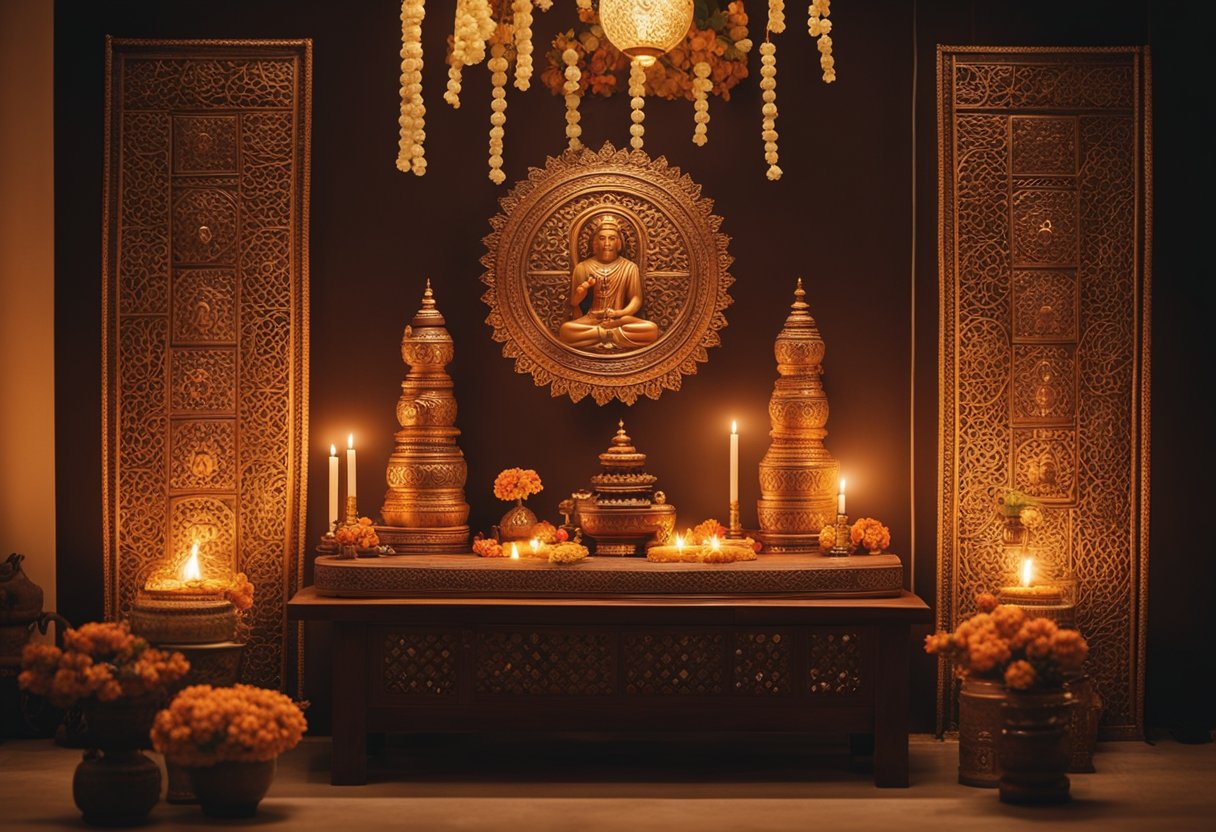
Designing a pooja room for your home can be a fun and exciting process. Here are some tips to help you create a functional and beautiful space that will help you connect with your spirituality.
Choosing the Perfect Location
When designing your pooja room, the first thing to consider is the location. According to Vastu principles, the ideal location for a pooja room is in the northeast corner of the house. This is said to bring positive energy into the home. However, if this is not possible, you can also choose the east or north direction.
Selecting Materials and Colours
Once you have chosen the location, the next step is to select the materials and colours for your pooja room. Traditional pooja room designs often feature wood, marble, and gold accents. However, modern pooja room designs may incorporate glass and metal elements as well.
When selecting colours, it is important to choose shades that promote a peaceful and calming atmosphere. White is a popular choice for pooja rooms as it symbolises purity and peace. You can also consider incorporating colours such as blue or green, which are known to have a calming effect.
Incorporating Vastu Principles
Incorporating Vastu principles into your pooja room design can help create a space that is harmonious and promotes positive energy. Some Vastu tips to consider include:
- Placing the deity in the east or west direction
- Avoiding a pooja room under a staircase or in the basement
- Using a wooden cabinet or shelf to store pooja essentials
- Placing diyas or candles in the southeast corner of the room
Furniture and Storage Solutions
When designing your pooja room, it is important to consider the furniture and storage solutions you will need. A wooden cabinet or shelf is a popular choice for storing pooja essentials such as incense, candles, and prayer beads. You can also consider incorporating drawers or cabinets to store larger items.
Lighting and Accessories
Lighting is an important element of pooja room design. Ambient lighting can help create a peaceful and relaxing atmosphere, while recessed lighting can highlight the deity and other decorative elements. You can also incorporate pooja room accessories such as om symbols, lotus motifs, or devotional words to add a personal touch to the space.
Decorative Elements
Finally, consider incorporating traditional elements into your pooja room design. Idols, statues, and paintings can help create a sense of spirituality and reverence in the space. You can also consider incorporating wallpaper with traditional designs or devotional words to add a decorative touch to the walls.
By following these tips, you can create a pooja room that is both functional and beautiful. Whether you prefer a traditional or modern design, incorporating these elements can help create a space that promotes peace, harmony, and positive energy.
Integrating Pooja Space in Modern Homes
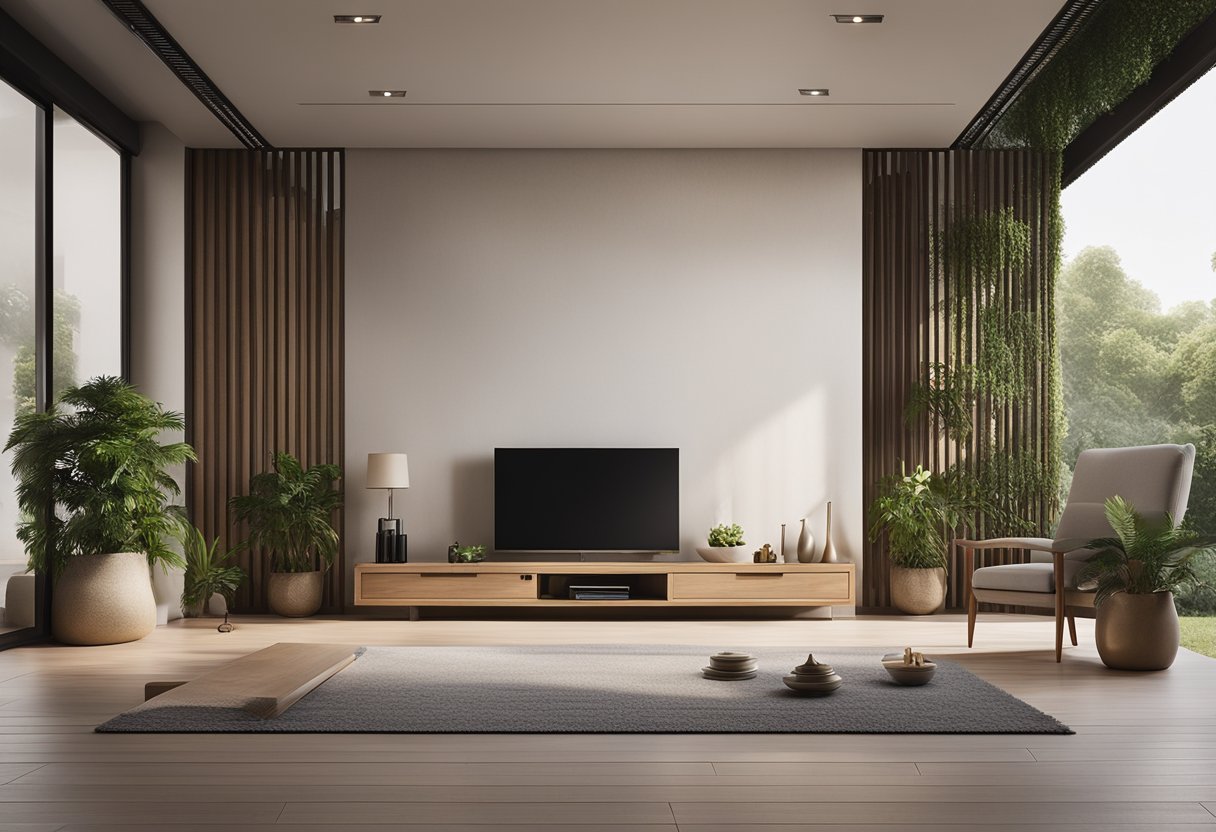
If you are looking to create a tranquil and serene space in your home for meditation and relaxation, a pooja room can be a perfect addition. With modern pooja room designs, you can create a space that is both aesthetically pleasing and functional, regardless of the size of your home. Here are some ideas for integrating pooja space in modern homes.
Modern and Minimalist Designs
Modern pooja room designs often focus on clean and minimal lines, with a clutter-free and functional space. With the use of glass doors, false ceiling designs, mirrors, and meditative plants, you can create a space that is both harmonious and relaxing. Studio Lagom, a leading design firm, suggests that the use of a niche in the living room or dining room can be an innovative way to integrate a pooja space in modern homes.
Innovative Use of Small Spaces
For small apartments, creating a dedicated room for pooja space may not be feasible. However, with innovative use of small spaces, you can still create a meditative and tranquil space in your home. Livspace, a leading interior design platform, suggests that you can use a corner of your living room or dining room to create a pooja space. With the use of a small pooja room design, such as a floating shelf or a wall-mounted pooja unit, you can create a functional and space-saving space.
Combining with Living Areas
Combining pooja space with living areas can be an innovative way to create a harmonious and serene space in your home. Tejas Shah, an interior designer, suggests that you can use a pooja room as a partition between the living room and dining room. With the use of glass doors, you can create a visually appealing space that is both functional and meditative.
In conclusion, integrating pooja space in modern homes can be an exciting and innovative way to create a harmonious and serene space in your home. With the use of modern pooja room designs, small pooja room designs, and innovative use of space, you can create a functional and aesthetically pleasing space that is perfect for meditation and relaxation.
Frequently Asked Questions
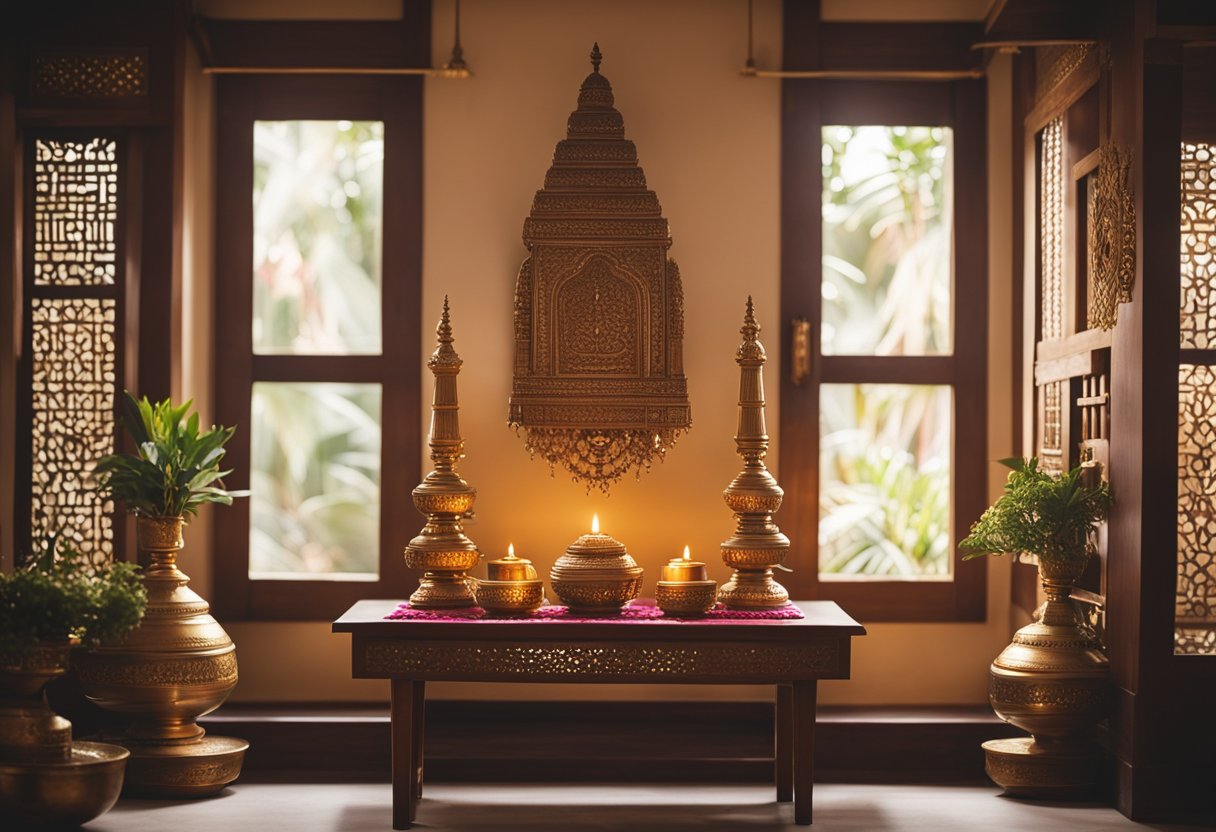
What are the most auspicious colours to adorn a pooja room?
When it comes to choosing colours for your pooja room, you should opt for shades that are calming and spiritual. The most auspicious colours for a pooja room are white, yellow, red, orange, and saffron. White symbolises purity and peace, yellow represents knowledge and learning, red signifies power and passion, orange symbolises purity and spirituality, and saffron represents purity and enlightenment. You can use these colours in combination or choose one as the main colour for your pooja room.
How can one create an inviting atmosphere in a home pooja room?
A pooja room should be a serene and inviting space that promotes peace and tranquillity. To create an inviting atmosphere, you can use soft lighting, scented candles, and fresh flowers. You can also add a comfortable seating arrangement and play soothing music to enhance the ambiance.
What essential items should one never forget to include in a pooja room?
A pooja room is incomplete without certain essential items. These include a statue or picture of the deity you worship, a lamp or diya, incense sticks, holy water, flowers, and fruits. You can also include a bell, a conch shell, and a rudraksha mala to complete the setup.
Could you suggest some creative ideas for pooja room wall decorations?
Wall decorations can add a touch of elegance to your pooja room. You can use traditional paintings, such as Tanjore paintings or Madhubani paintings, to adorn the walls. You can also use wall hangings, such as torans or tapestries, to add a pop of colour. Another creative idea is to use stencils to create intricate designs on the walls.
In which direction should the idols be placed for the ideal pooja room setup?
The ideal direction to place the idols in a pooja room is the east or the west. The idols should be placed at a height where they can be easily worshipped. You should also ensure that the idols are not placed in a corner or facing a wall.
What lighting options would best enhance the serenity of a pooja room?
Lighting plays an important role in creating a serene atmosphere in a pooja room. You can use soft, warm lighting to create a calming effect. You can also use candles or diyas to add a traditional touch. Another option is to use LED strip lights to highlight the architectural features of the pooja room.

